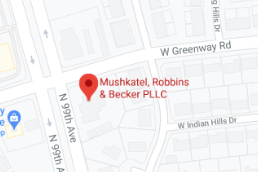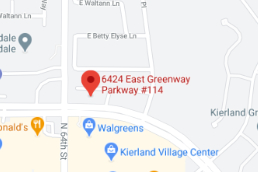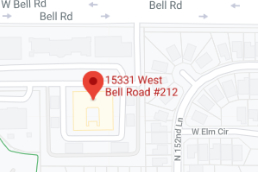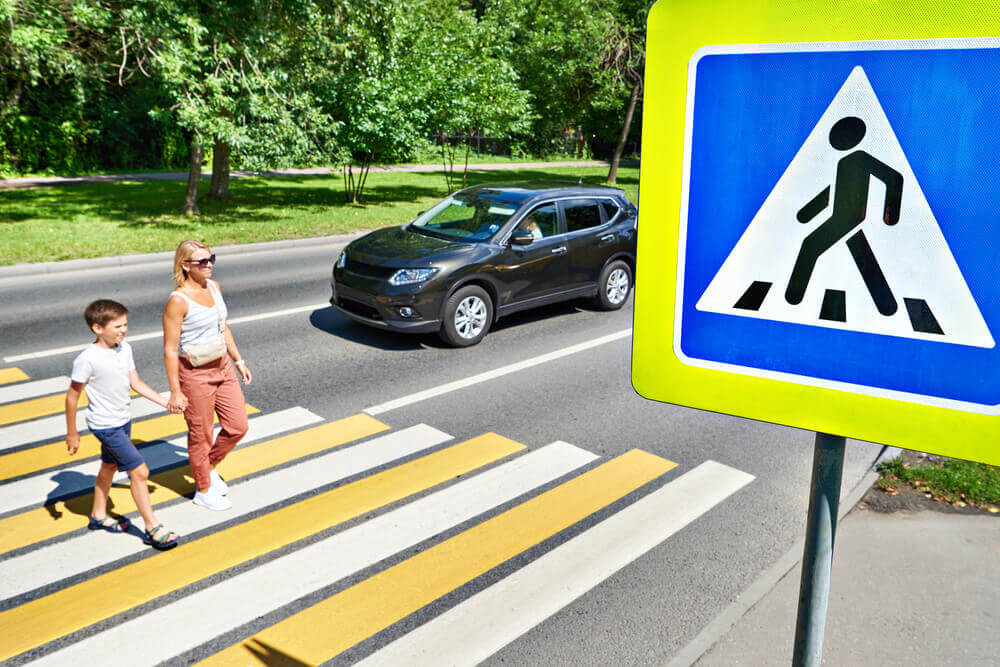
Were you injured in a pedestrian accident in Peoria, Arizona? You might be facing a mountain of medical bills, and if your injuries have kept you off work, you could be wondering how you’ll pay them. However, if someone else was at fault for the accident, they could owe you significant compensation for these and many other losses.
The personal injury attorneys at the law firm of Mushkatel, Robbins & Becker, PLLC, want to help you seek justice and accountability after a pedestrian accident. Contact us today for a free consultation with one of our experienced Peoria pedestrian crash lawyers.
Table of Contents
- What Are Some Pedestrian Accident Statistics?
- What Are Common Causes of Pedestrian Accidents in Arizona?
- Where Do Most Pedestrian Accidents Happen?
- How Is Fault Proven in a Peoria Pedestrian Accident Case?
- Can the Pedestrian Be at Fault in the Accident?
- What Damages May Be Recovered in a Peoria Pedestrian Accident Claim?
- Is There a Time Limit for Filing a Pedestrian Accident Claim in Arizona?
- Contact a Peoria Pedestrian Accident Lawyer
What Are Some Pedestrian Accident Statistics?
According to the National Safety Council (NSC), in one recent year, more than 7,900 pedestrians died in accidents on public roads, driveways, and other private property. Furthermore, the U.S. Centers for Disease Control and Prevention (CDC) reports that an estimated 104,000 injured pedestrians visited emergency rooms that same year.
In Arizona, over 1,700 pedestrian crashes occurred in one recent year, resulting in nearly 260 fatalities and over 1,500 injuries. Here are some additional pedestrian accident statistics from the Arizona Department of Transportation:
- Most pedestrian injuries (64 percent) and fatalities (56 percent) occur when pedestrians cross the road.
- Fifteen percent of all pedestrian accidents resulted in a fatality.
- Most pedestrian accidents (93 percent) occur in urban areas.
- While pedestrian accidents make up just 1.4 percent of all crashes, they account for 22 percent of all fatalities.
- Maricopa County saw the most pedestrian crashes (1,237), accounting for 72 percent of all Arizona pedestrian crashes. Yavapai County saw 19 pedestrian crashes.
What Are Common Causes of Pedestrian Accidents in Arizona?
In Arizona, common causes of pedestrian accidents include the following:
- Speeding – According to a recent report from the AAA Foundation, the average risk of severe injury to pedestrians increases as the impact speed increases. For example, when a vehicle strikes a pedestrian at 16 mph, the average risk of injury is 10 percent but increases to 90 percent at an impact speed of 46 mph. A driver who is speeding may be unable to stop to avoid hitting a pedestrian.
- Drunk driving – According to the National Highway Traffic Safety Administration (NHTSA), drunk drivers killed a pedestrian in 1,030 traffic crashes in one recent year. Alcohol diminishes drivers’ reaction time, judgment, and vision, putting any innocent pedestrians in their path at risk.
- Distracted driving – According to NHTSA, distracted drivers killed over 3,100 people in one recent year. Motor vehicle drivers who are texting, calling, eating, or talking to passengers could fail to see pedestrians before it is too late.
- Failure to yield to pedestrians – Under Arizona law, drivers must yield to pedestrians at crosswalks that do not have traffic control signals whenever the pedestrian is close to or already crossing the road. Drivers who fail to yield to pedestrians are not only breaking the law but also putting pedestrians at grave risk.
- Failure to check before turning or backing up – Drivers should check that the way is clear before turning or backing up. Many pedestrian accidents occur when a driver backs up, turns left at an intersection, or turns right onto a road but fails to check that no pedestrians are crossing at that time.
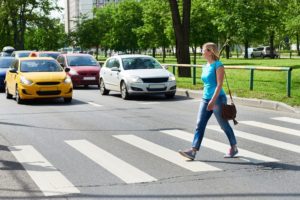
Where Do Most Pedestrian Accidents Happen?
Pedestrian accidents occur in various places, but the most common locations include the following:
- Crosswalks – Crosswalks are intended as a safe place for pedestrians to cross roadways, making them a prime location for pedestrian encounters with vehicles. Unfortunately, many pedestrian accidents occur at crosswalks because of distracted, drunk, speeding, or aggressive drivers.
- Intersections – At intersections, drivers must keep a lookout for pedestrians when turning, obey traffic lights and signs, and follow right-of-way rules. Drivers who fail to take these important actions put pedestrians at risk.
- Parking lots – According to the NSC, tens of thousands of accidents occur in parking garages and parking lots each year, including pedestrian accidents. Parking lots are a space meant to be shared by vehicles and pedestrians. Unfortunately, drivers often get distracted while looking for a parking spot, checking their phones, fiddling with items in their cars, or trying to get somewhere quickly.
How Is Fault Proven in a Peoria Pedestrian Accident Case?
Evidence is essential to proving fault in a Peoria pedestrian accident case. Your lawyer can help you gather evidence that demonstrates the at-fault driver’s negligence, such as:
- Photos of the accident scene and your injuries
- Videos of the accident from security footage, traffic cameras, bystanders’ cameras, and dashcams
- Eyewitness testimony
- Police officer’s crash report
- Medical records
- Phone records
- Expert testimony
Can the Pedestrian Be at Fault in the Accident?
Pedestrians can sometimes be at fault for an accident. Like everyone else, pedestrians are responsible for following the law and meeting their duty of care. Instances in which a pedestrian might be at fault for an accident include the following:
- The pedestrian failed to cross the road at a designated crosswalk.
- The pedestrian was drunk or otherwise impaired.
- The pedestrian was distracted while crossing.
- The pedestrian stepped abruptly in front of a vehicle that could not stop.
Being partially at fault for an accident won’t automatically prevent you from seeking compensation for your injuries under Arizona’s comparative negligence law, though your compensation would be reduced in proportion to your share of fault. For example, suppose you were injured in a pedestrian accident and suffered $100,000 in losses due to medical expenses and lost wages. If you were found to be 10 percent at fault for the accident, your compensation would be reduced by 10 percent, leaving you with $90,000 in damages.
What Damages May Be Recovered in a Peoria Pedestrian Accident Claim?
You may recover compensation, also known as damages, by filing a pedestrian accident claim against the at-fault driver. A lawyer can help you seek damages for the following accident-related losses:
- Medical care expenses, including hospital and doctor’s visits, physical therapy, medications, and medical devices
- Lost wages from missing work due to your injuries
- Diminished future earning capacity if your injuries lead to a long-term disability
- Pain and suffering
- Mental anguish
- Emotional distress
- Disfigurement
- Loss of quality of life
- Loss of consortium
Is There a Time Limit for Filing a Pedestrian Accident Claim in Arizona?
Under Arizona law, you have two years from the accident date to file a personal injury lawsuit against the negligent driver. While you may not need to go so far as to file a lawsuit to recover compensation after a pedestrian accident, you must protect your right to do so. Do not delay. Consult an attorney as soon as possible after a pedestrian accident.
Contact a Peoria Pedestrian Accident Lawyer
If you suffered an injury in a Peoria pedestrian accident, the lawyers at Mushkatel, Robbins & Becker, PLLC, are here to help you. We will listen to your story, explain your legal options, act quickly to protect your rights, and demand fair compensation from the at-fault driver. Contact our law firm today for a free consultation.









